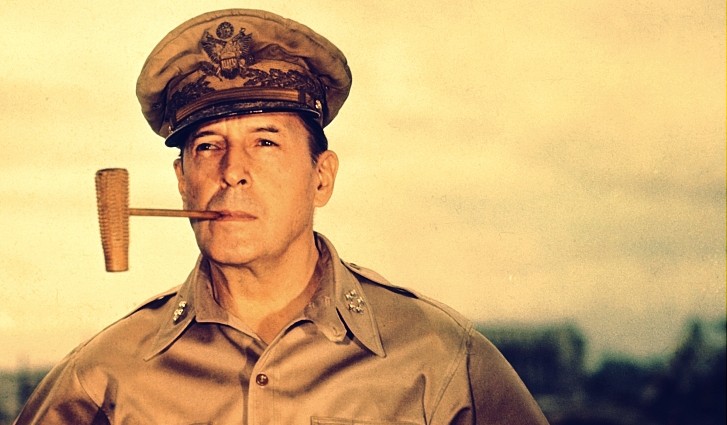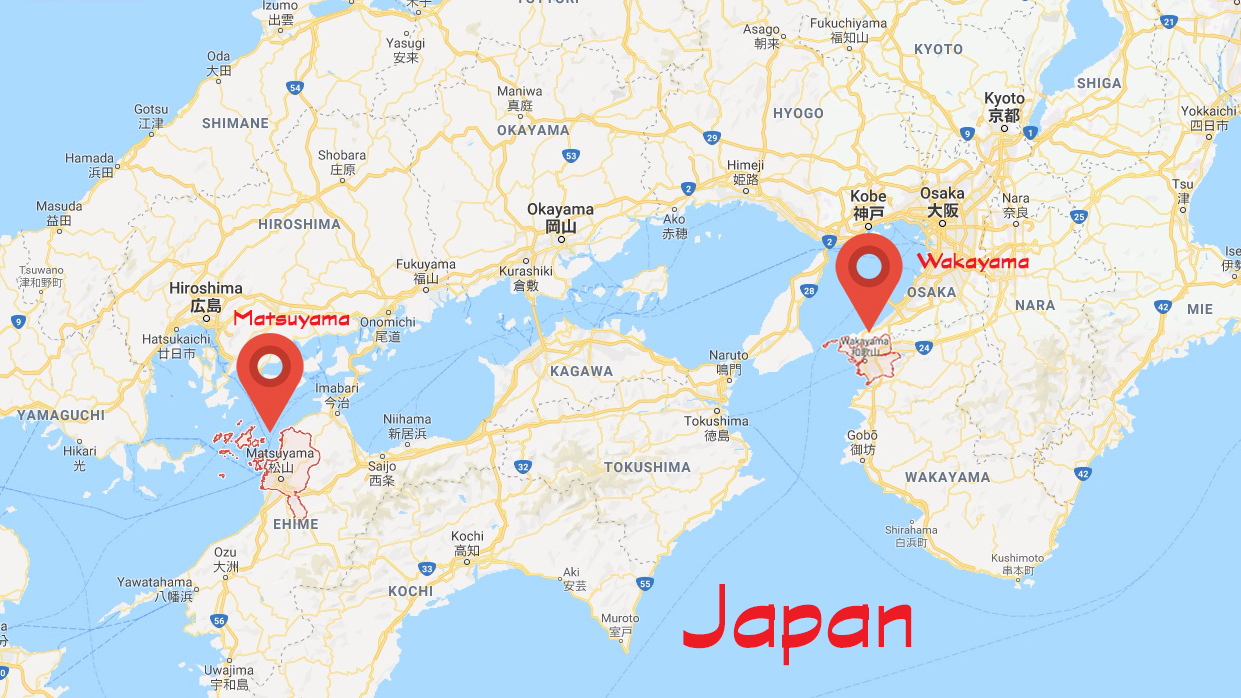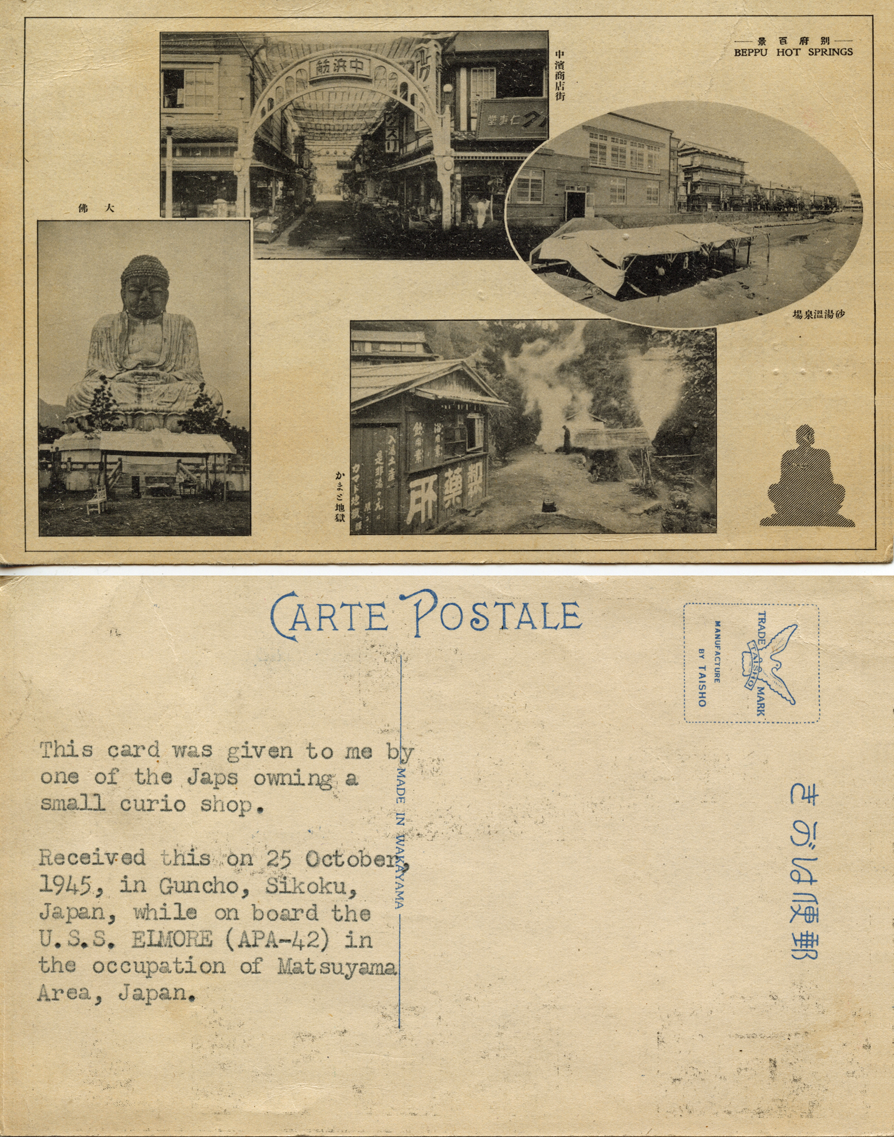


The Occupation of Japan
USS Elmore (APA-42) landed occupation troops at Wakayama and Mitsugahama in 1945
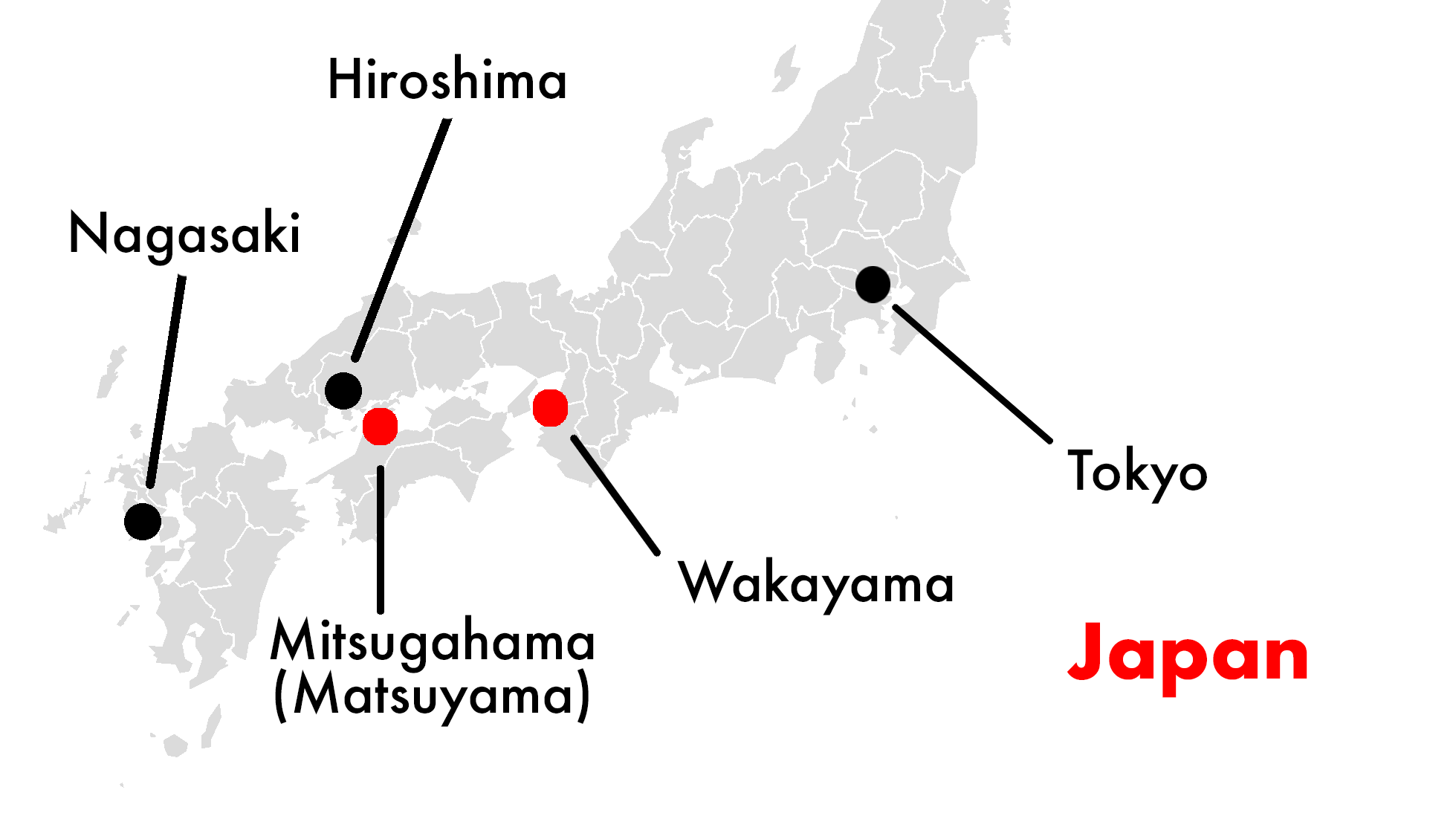
Overview
The Allied occupation of Japan at the end of World War II was led by General Douglas MacArthur, the Supreme Commander of the Allied Powers (SCAP), with support from the British Commonwealth. Unlike the occupation of Germany, the Soviet Union was permitted little to no influence over Japan. This foreign presence marks the only time in Japan's history that it has been occupied by a foreign power. The country was transformed from a monarchy into a parliamentary democracy. The occupation, codenamed Operation Blacklist, was ended by the San Francisco Peace Treaty, signed on September 8, 1951, and effective from April 28, 1952, after which Japan's sovereignty – with the exception, until 1972, of the Ryukyu Islands – was fully restored.
Initial Phase
Japan surrendered to the Allies on August 14, 1945, when the Japanese government notified the Allies that it had accepted the Potsdam Declaration. On the following day, Emperor Hirohito announced Japan's unconditional surrender on the radio. The announcement was the emperor's first-ever planned radio broadcast and the first time most citizens of Japan had ever heard their empereor’s voice. This date is known as Victory over Japan, or V-J Day, and marked the end of World War II and the beginning of a long road to recovery for a shattered Japan. Japanese officials left for Manila, Philippines on August 19 to meet MacArthur and to be briefed on his plans for the occupation. On August 28, 1945, 150 US personnel flew to Atsugi, Kanagawa Prefecture. They were followed by USS Missouri, whose accompanying vessels landed the 4th Marine Division on the southern coast of Kanagawa. Other Allied personnel followed.
MacArthur arrived in Tokyo on August 30, and immediately decreed several laws. No Allied personnel were to assault Japanese people. No Allied personnel were to eat the scarce Japanese food. Flying the Hinomaru or "Rising Sun" flag was initially severely restricted but this restriction was partially lifted in 1948 and completely lifted the following year.
On September 2, 1945, Japan formally surrendered with the signing of the Japanese Instrument of Surrender. On September 6, US President Truman approved a document titled "US Initial Post-Surrender Policy for Japan". The document set two main objectives for the occupation: (1) eliminating Japan's war potential and (2) turning Japan into a democratic-style nation with pro-United Nations orientation.
Allied (primarily American) forces were set up to supervise the country, and "for eighty months following its surrender in 1945, Japan was at the mercy of an army of occupation, its people subject to foreign military control." At the head of the Occupation administration was General MacArthur, who was technically supposed to defer to an advisory council set up by the Allied powers, but, in practice, held full command.
SCAP
On V-J Day, US President Harry Truman appointed General Douglas MacArthur as Supreme Commander for the Allied Powers (SCAP), to supervise the occupation of Japan. During the war, the Allied Powers had planned to divide Japan amongst themselves for the purposes of occupation, as was done for the occupation of Germany. Under the final plan, however, SCAP was given direct control over the main islands of Japan (Honshu, Hokkaido, Shikoku, and Kyushu) and the immediately surrounding islands.
Beginning in the fall of 1945, SCAP (a term which refers both to General MacArthur and to his headquarters) undertook three sets of programs: providing food, shelter and public health for millions of people in order to avoid famine and epidemic disease in the winter of 1945-1946, demilitarizing a polity dominated by the army and navy, and democratizing Japan.
MacArthur's first priority was to set up a food distribution network; following the collapse of the ruling government and the wholesale destruction of most major cities, virtually everyone was starving. Even with these measures, millions of people were still on the brink of starvation for several years after the surrender. The US government encouraged democratic reform in Japan, and while it sent billions of dollars in food aid, this was dwarfed by the occupation costs it imposed on the struggling Japanese administration.
Once the food network was in place MacArthur set out to win the support of Hirohito. The two men met for the first time on September 27; the photograph of the two together is one of the most famous in Japanese history. Some were shocked that MacArthur wore his standard duty uniform with no tie instead of his dress uniform when meeting the emperor. With the sanction of Japan's reigning monarch, MacArthur had the ammunition he needed to begin the real work of the occupation. While other Allied political and military leaders pushed for Hirohito to be tried as a war criminal, MacArthur resisted such calls, arguing that any such prosecution would be overwhelmingly unpopular with the Japanese people.
By the end of 1945, more than 350,000 US personnel were stationed throughout Japan. By the beginning of 1946, replacement troops began to arrive in the country in large numbers and were assigned to MacArthur's Eighth Army, headquartered in Tokyo's Dai-Ichi building. Of the main Japanese islands, Kyushu was occupied by the 24th Infantry Division, with some responsibility for Shikoku. Honshu was occupied by the First Cavalry Division. Hokkaido was occupied by the 11th Airborne Division.
By June 1950, all these army units had suffered extensive troop reductions and their combat effectiveness was seriously weakened. When North Korea invaded South Korea in the Korean War, elements of the 24th Division were flown into South Korea to try to fight the invasion force there, but the inexperienced occupation troops, while acquitting themselves well when suddenly thrown into combat almost overnight, suffered heavy casualties and were forced into retreat until other Japan occupation troops could be sent to assist.
While MacArthur's reforms were being implemented, various military tribunals were trying Japan's war criminals and sentencing many to death and imprisonment. However, Emperor Hirohito and all members of the imperial family were granted immunity from criminal prosecution by General MacArthur. The trials for Class A criminals, which began in May 1946, did not end until November 1948, when seven of the defendants, including Generals Tojo and Matsui Iwane, the Japanese commander in Nanjing at the time of the atrocities there in 1937-1938, were sentenced to death. Sixteen others received life sentences (all commuted within two or three years after the occupation's end) and two shorter sentences.
End of the Occupation
In 1949, MacArthur made a sweeping change in the SCAP power structure that greatly increased the power of Japan's native rulers, and the occupation began to draw to a close. The Treaty of San Francisco, which was to end the occupation, was signed on September 8, 1951. It came into effect on April 28, 1952, formally ending all occupation powers of the Allied forces and restoring full sovereignty to Japan, except for the island chains of Iwo Jima and Okinawa, which the United States continued to hold. Iwo Jima was returned to Japan in 1968, and most of Okinawa was returned in 1972.
Following the American departure, Japan gained military protection from the United States. However, the United States was soon pressuring Japan to rebuild its military capabilities, and as a result, the Japan Self-Defense Forces were formed as a de facto military force with US assistance. However, following the Yoshida Doctrine, Japan continued to prioritize economic growth over defense spending, relying on American protection to ensure it could focus mainly on economic recovery. Through Guided Capitalism, Japan was able to optimally utilize its resources to economically recover from the war, and revive industry. Some 31,000 US military personnel remain in Japan today at the invitation of the Japanese government as the United States Forces Japan under the terms of the Treaty of Mutual Cooperation and Security between the United States and Japan (1960) and not as an occupying force. US bases in and around Tokyo, Hiroshima, Nagasaki, Aomori, Sapporo, and Ishikari are currently active.
Source: Wikipedia
Empire of Japan (1945–1947) Japan (1947–1952)
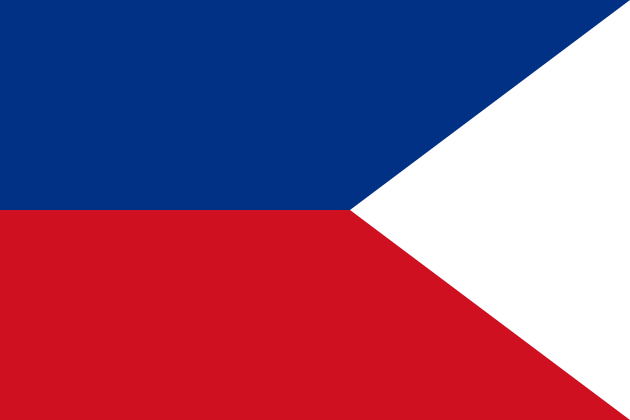
Civil and naval ensign during the occupation of Japan
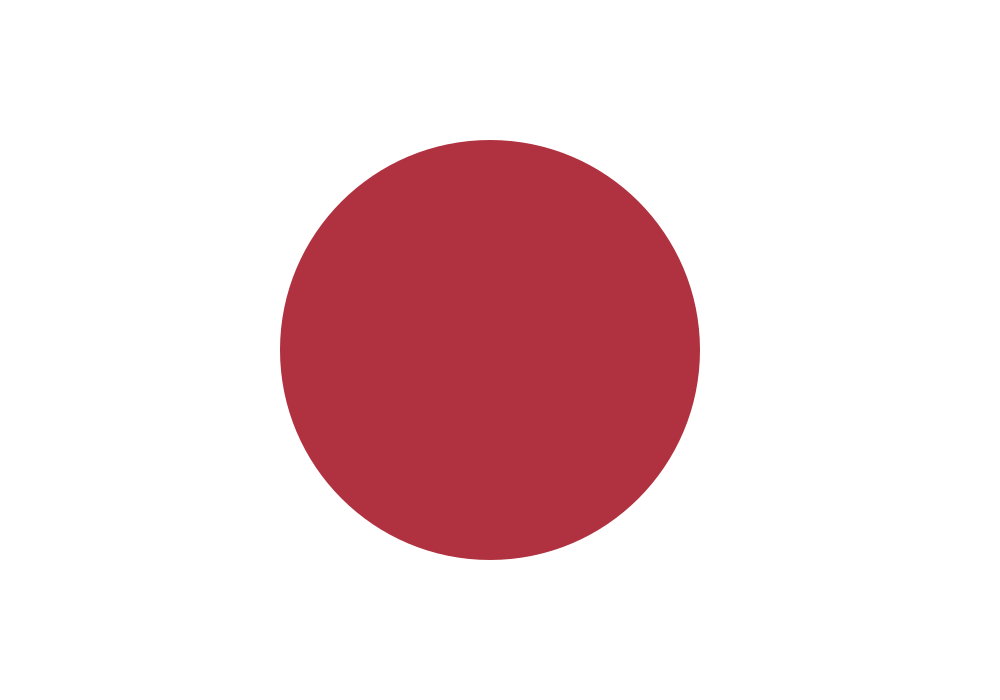
The national flag of Japan is a rectangular white banner bearing a crimson-red disc at its center. It embodies the country's sobriquet: Land of the Rising Sun.
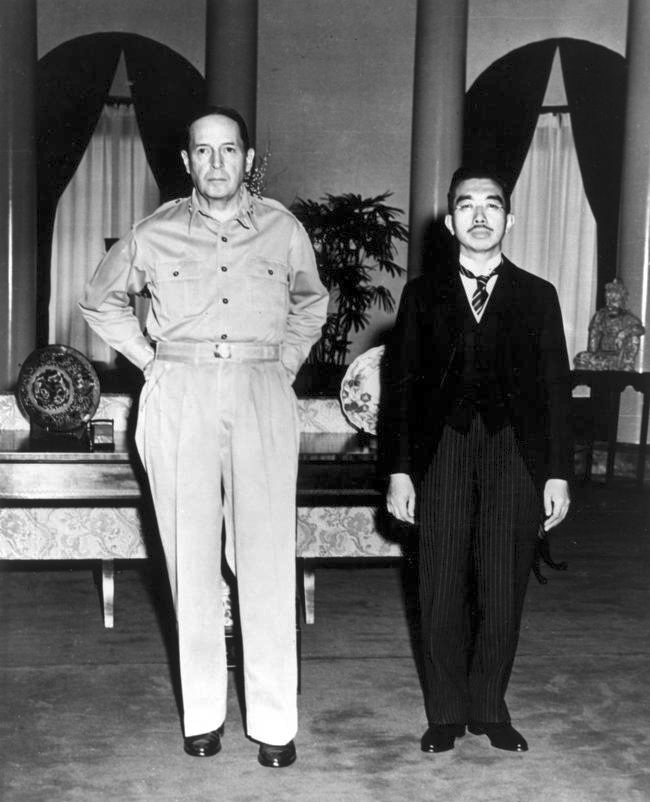
General Douglas MacArthur and Emperor Hirohito. Click to zoom
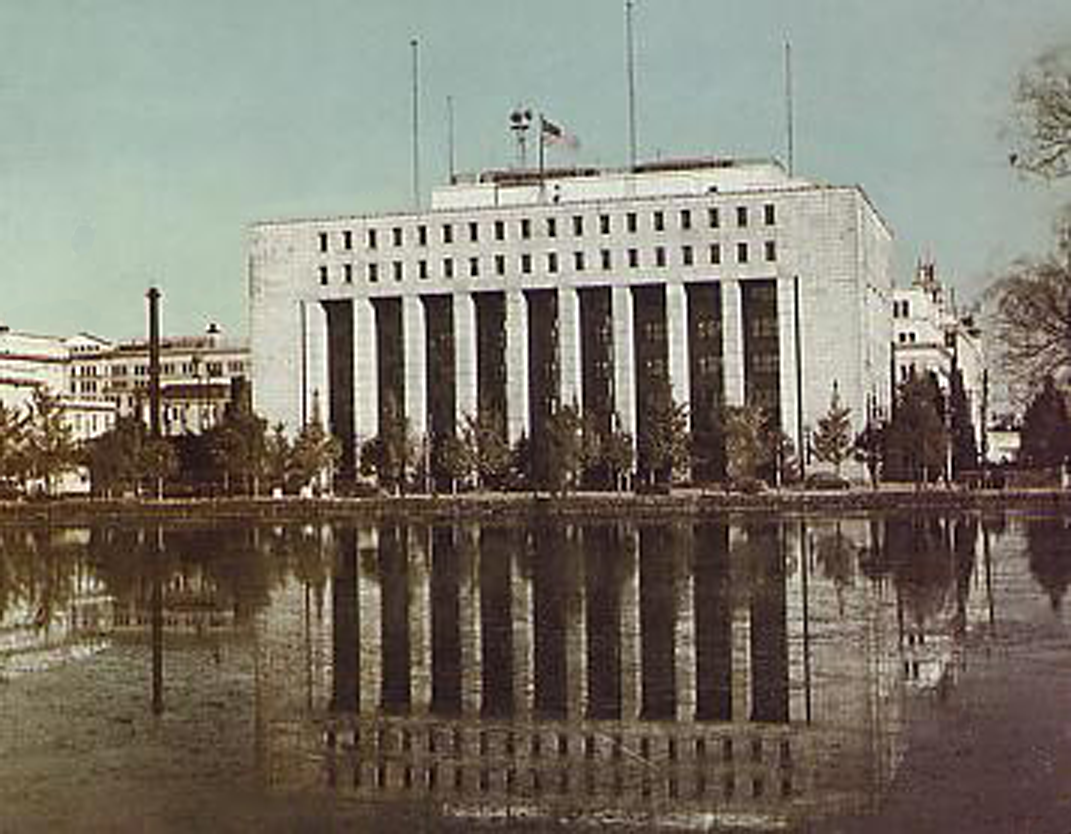
The former Dai-Ichi Seimei Building, in which Douglas MacArthur had his headquarters during the occupation of Japan following World War II. Click to zoom
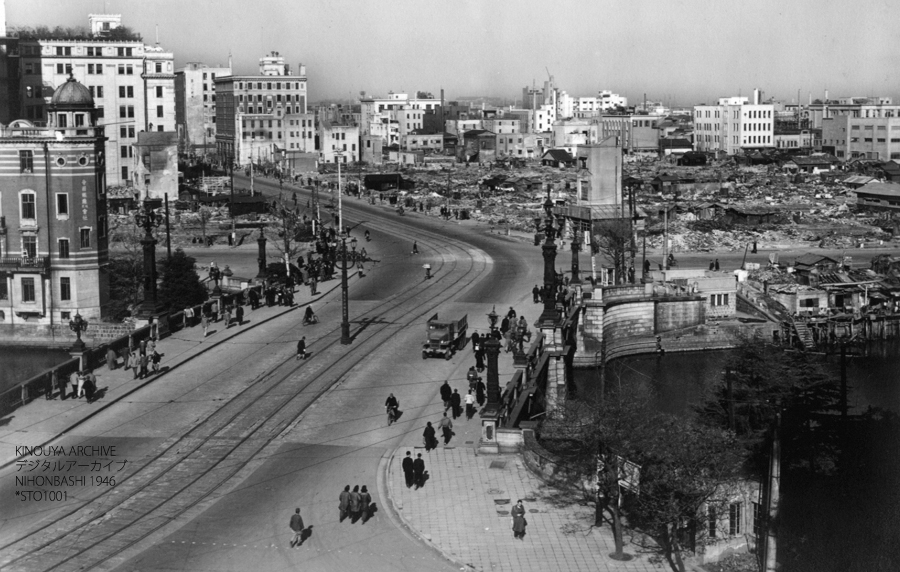
Nihonbashi, Tokyo, in 1946 Click to zoom
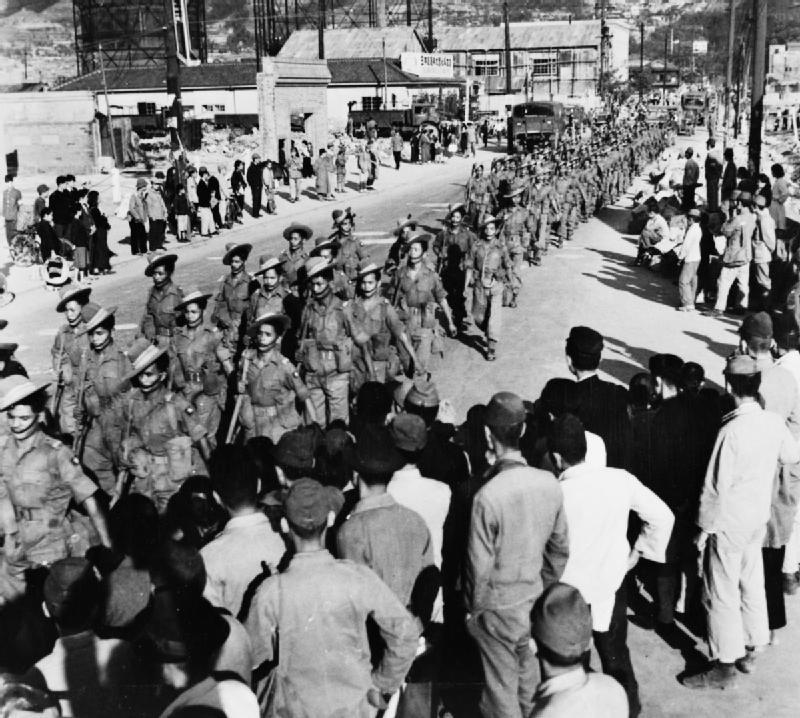
May 1946: The 2nd Battalion 5th Royal Gurkha Rifles march through Kure, Hiroshima soon after their arrival in Japan. Click to zoom
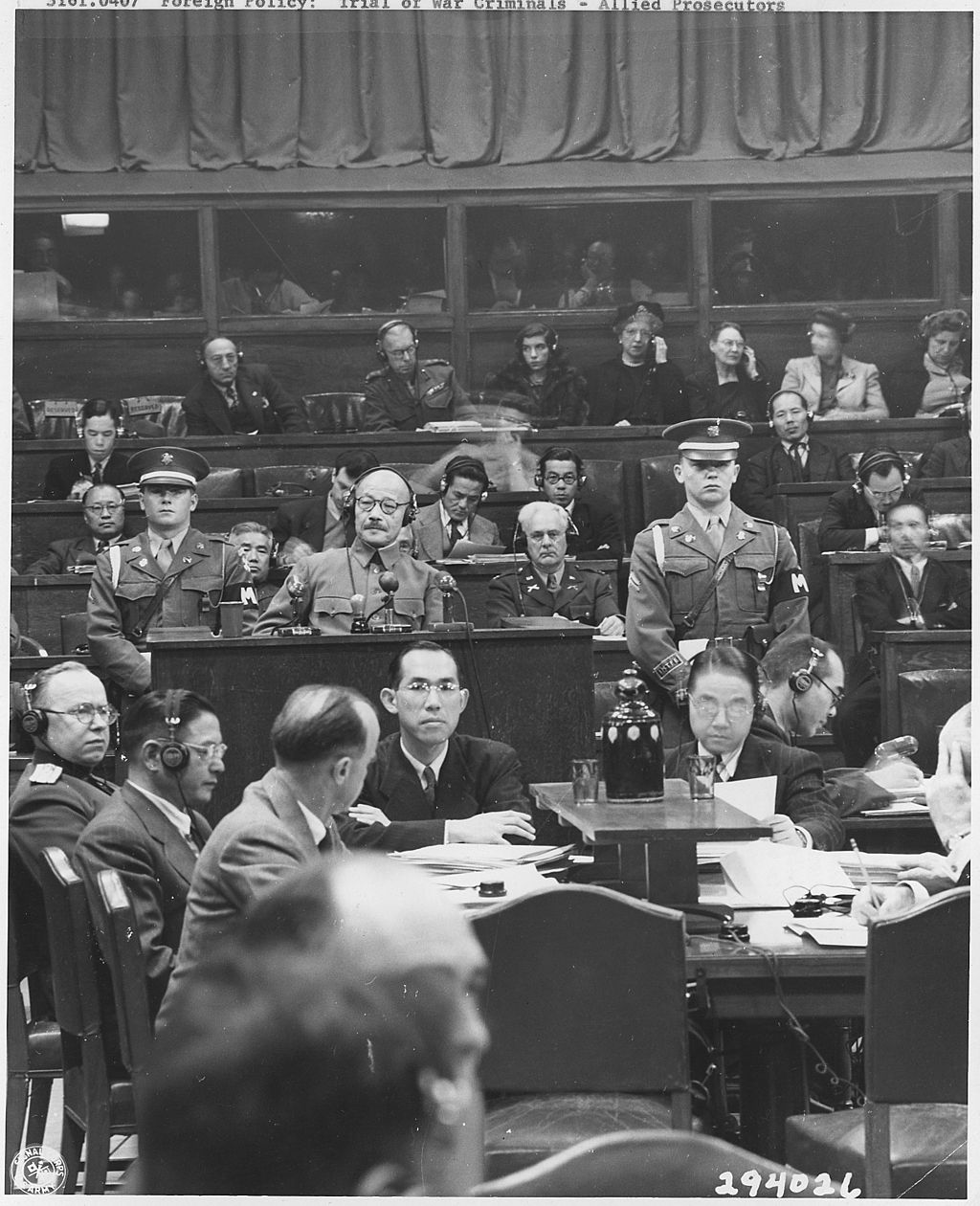
Hideki Tōjō takes the stand at the Tokyo war crimes tribunal. Click to zoom
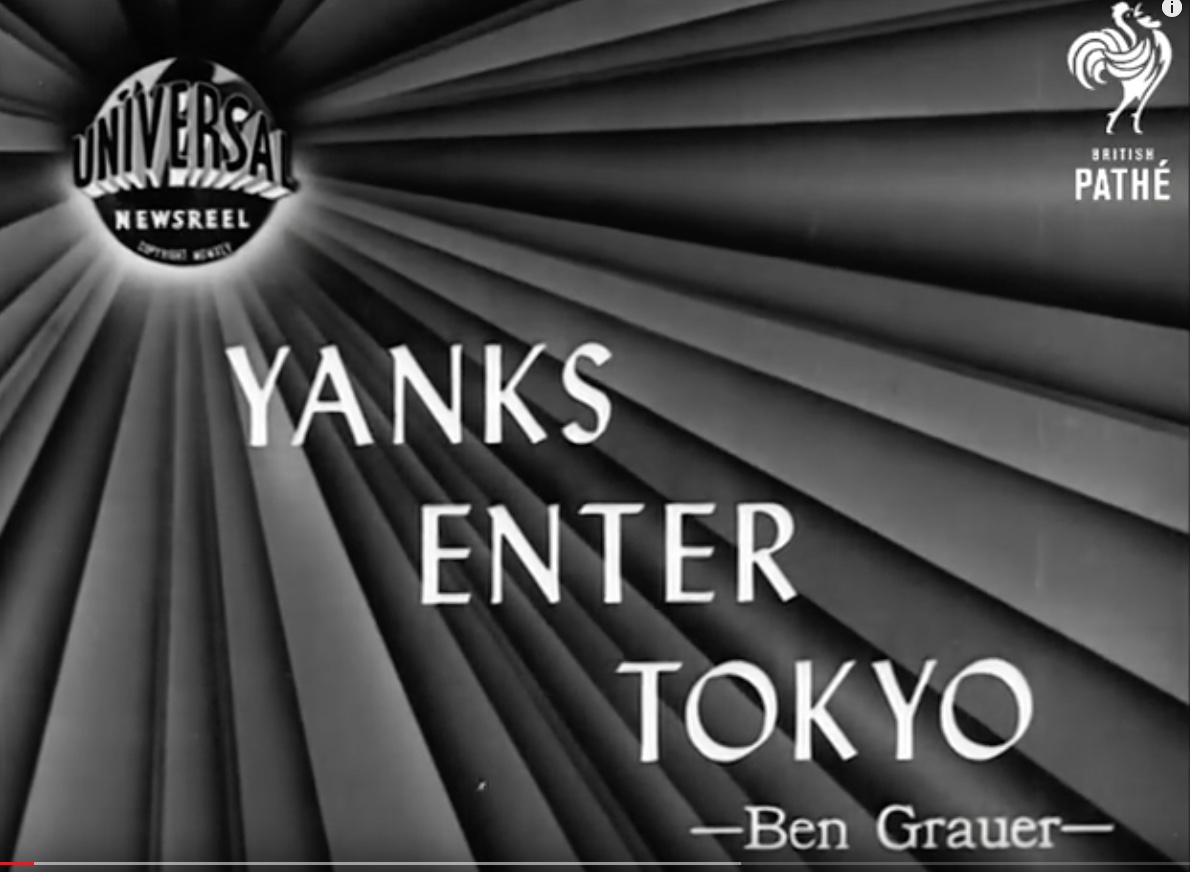
Video: Yanks Enter Tokyo: U.S. Soldiers in Japan (1945) [1:20]
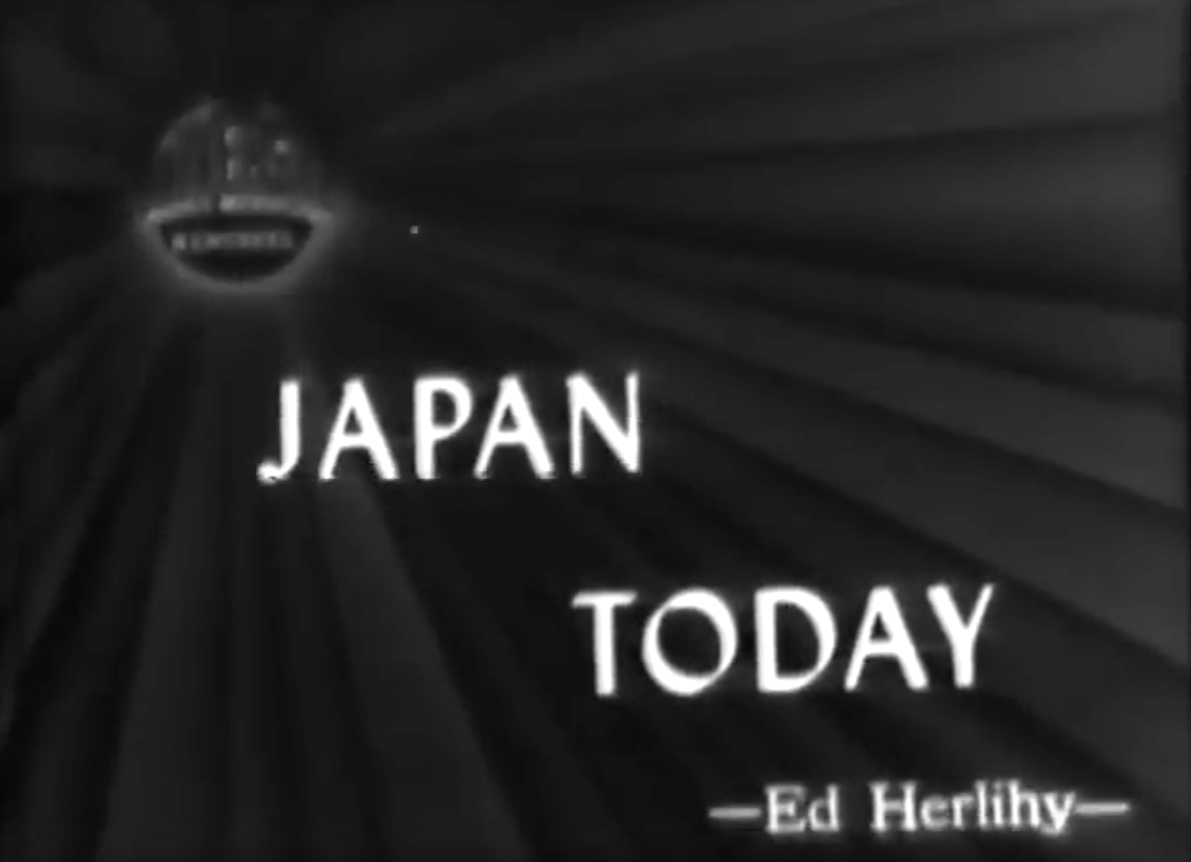
Video: Japan Today (1946) [1:30]
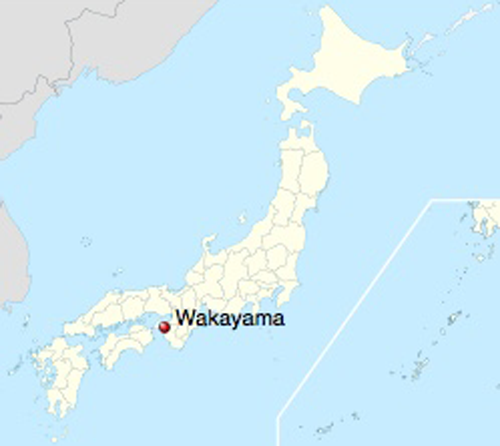
Wakayama
Coordinates: 34°14′N 135°10′E
25 September 1945
On 25 September 1945, Elmore anchored in inner transport area CHARLIE off Wakayama, Honshu, Japan, one of six ships of Task Group 54.6.12, Commodore Ryan, USN, Commander Transport Squadron 54.6.1. Embarked occupation troops of the 33rd U.S. Army Division and unloaded cargo for troops. Departed for Subic Bay, Leyte, Philippines, on 26 September 1945.
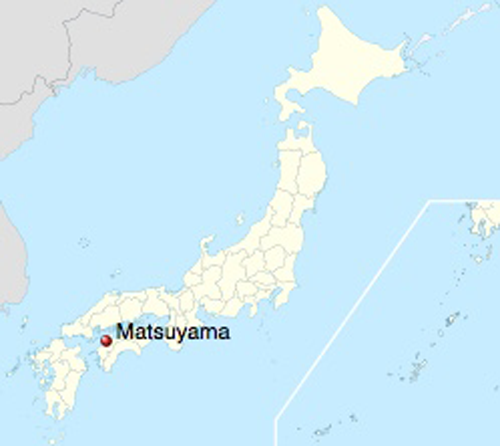
Mitsugahama (Matsuyama)
Coordinates: 33°50′N 132°46′E
22-26 October 1945
On 22 October 1945, Elmore anchored in berth 43 off Mitsugahama, Mitsuyama, Shikoku, Japan, one of five ships of Task Unit 54.13.22, Commodore Ryan, USN, Fleet Guide Commander Transport Squadron 14. Debarked occupation troops of the 3rd Battalion, 19th Infantry Regiment of the 24th Army Division and attached units. Departed for Buckner Bay, Okinawa, on 27 October 1945.












